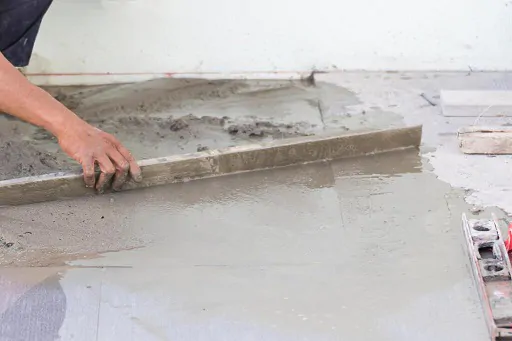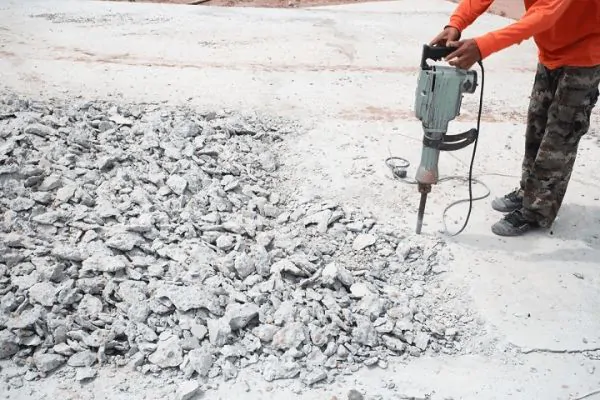- Monday to Friday - 08:00 AM to 06:00PM
- Saturday - 08:00 AM to 12:00PM
- Sunday - Closed

If you are not ready to take on a whole new concrete project but would instead like to touch up existing concrete, we are here to serve you as well! Whether it be from poor construction or normal wear and tear, sometimes concrete work becomes cracked or even decayed. In these cases, we offer services in your city and others area in NM that aim to repair, resurface, grind, and polish existing concrete work. It is important to maintain the structural integrity of concrete for both aesthetic and safety reasons – especially in cases of foundations, stairs, walkways, and retaining walls. Damaged concrete can create significant liability for a property owner.
Repairing concrete is not always a feasible option. However, our professionals are highly knowledgeable in this area and will be able to determine whether or not repairs are an appropriate solution to your issue. If conducting repairs is a good option for your concrete, our contractors will be able to make the repairs using only the best industry practices. In accordance with our dedication to providing the best customer service possible, we will also work to repair your concrete in a time-efficient manner. The sooner we can make your concrete safe and appealing, the sooner you can go back to enjoying your property!


Perhaps your concrete is still structurally sound but could use a little sprucing up. In such cases, we offer a service to polish your concrete. Polishing concrete is a simple process that can bring a new life into your existing concrete work. Polished concrete is also often easier to keep clean because of the smooth surface polishing creates. If you are ready for dull concrete to have a new look, choosing to polish the concrete may be a great option for you! If you know about polished concrete vs tile floors, it’s a plus.
Additionally, we offer concrete grinding. Grinding is a process that helps remove any imperfections or inconsistencies from the concrete. This process provides clients with a more even, uniform concrete. Further, grinding concrete creates a smooth surface, rather than the typical semi-rough texture of concrete. This technique is often used indoors to soften the harsh feel that concrete can often have.
Another option you have to touch-up your existing concrete is to have your concrete resurfaced. Resurfacing concrete can also help bring a new life to concrete that has become weathered and worn down. Resurfacing your concrete is a low-cost process that helps protect the concrete from the various elements and exposures it is subjected to. This process helps lengthen the overall lifespan of your concrete structure.

Concrete cracks due to several factors, including shrinkage, thermal expansion, overloading, and improper curing. Shrinkage occurs as concrete dries, causing surface cracks. Temperature changes lead to expansion and contraction, resulting in stress fractures. Heavy loads or insufficient reinforcement can cause structural cracks. Poor installation techniques, such as inadequate mixing or improper finishing, also contribute to cracking. Identifying the root cause of cracks is essential for selecting the appropriate repair method and preventing future damage.
Yes, cracked concrete can be repaired using different methods depending on the severity and type of crack. Small, surface-level cracks can be filled with epoxy or polyurethane sealants, preventing moisture intrusion and further damage. Larger structural cracks may require professional repair using patching compounds, injections, or reinforcement techniques. If cracks result from underlying issues such as soil movement or poor installation, addressing those problems is crucial to prevent recurring damage.
The best repair method depends on the crack type and its severity. For hairline cracks, a high-quality concrete sealer or epoxy filler can be used. Wider cracks may require polyurethane injections, which expand to fill gaps and prevent water penetration. For deep or structural cracks, professional repair using reinforced concrete patching, resurfacing, or crack stitching with steel reinforcements is necessary. Proper surface preparation and choosing the right repair material ensure durability.
A well-executed concrete repair can last for many years, depending on the repair method, materials used, and environmental factors. High-quality repairs using epoxy or polymer-modified materials can last 10–20 years or more. Proper surface preparation, correct application, and ongoing maintenance play a crucial role in longevity. However, external factors like freeze-thaw cycles, heavy loads, and poor drainage can impact durability, making preventive maintenance essential for extending the repair’s lifespan.
Concrete resurfacing is a repair method that involves applying a new layer of cement-based overlay or polymer-modified material over an existing concrete surface. This technique restores the appearance and durability of worn-out or damaged concrete without full replacement. Resurfacing can cover cracks, stains, and minor imperfections, providing a fresh, smooth, and long-lasting finish. It is commonly used for driveways, patios, sidewalks, and floors to enhance aesthetics and functionality.
Concrete repair addresses specific damage, such as cracks, spalling, or surface deterioration, using patching, sealing, or resurfacing techniques. It is a cost-effective solution for restoring structural integrity and appearance. Concrete replacement, on the other hand, involves completely removing and repouring a new concrete section. Replacement is necessary when damage is too extensive for repair, such as deep structural cracks, severe erosion, or foundation failure.
Yes, but cold weather can affect the curing process and bond strength. Special cold-weather repair techniques include using fast-setting or winter-grade concrete mixes, heating the area, and applying insulating blankets to maintain optimal curing temperatures. If temperatures drop below freezing, repairs may require postponement until conditions improve. Professional contractors know how to handle cold-weather repairs for the best results.
Curing times vary based on material type and weather conditions. Most repairs set within 24 hours, but full curing may take 7–28 days. Epoxy-based fillers cure faster, while traditional concrete requires longer curing for maximum strength.
Yes, epoxy is excellent for concrete repair, especially for cracks and surface damage. It provides strong adhesion, waterproofing, and resistance to chemicals. Epoxy repairs last longer than traditional patching compounds.
Concrete should be replaced if it has severe structural damage, deep cracks, or widespread deterioration. If repairs are frequent and costly, replacement may be the better long-term solution.
To find out if our repair or resurfacing services are right for your needs, give us a call or send us an email. We would be happy to discuss the state of your existing concrete work and help you determine what options are best for you and your property. Our team members are always ready to answer any questions you may have!
© 2025 Santa Fe Concrete Contractors All Rights Reserved